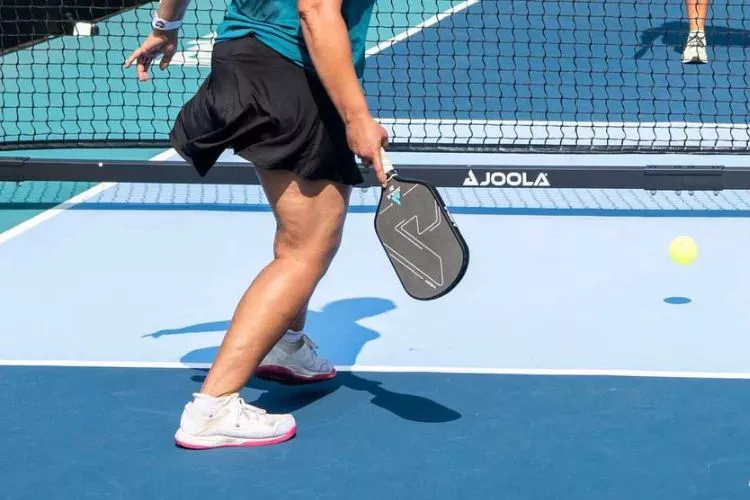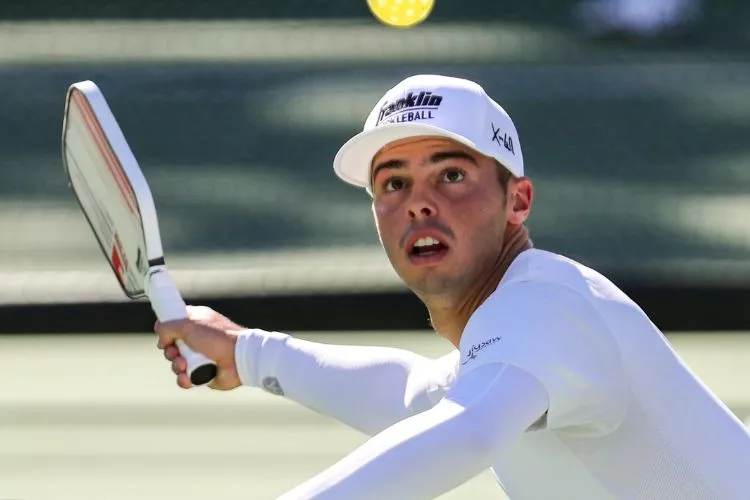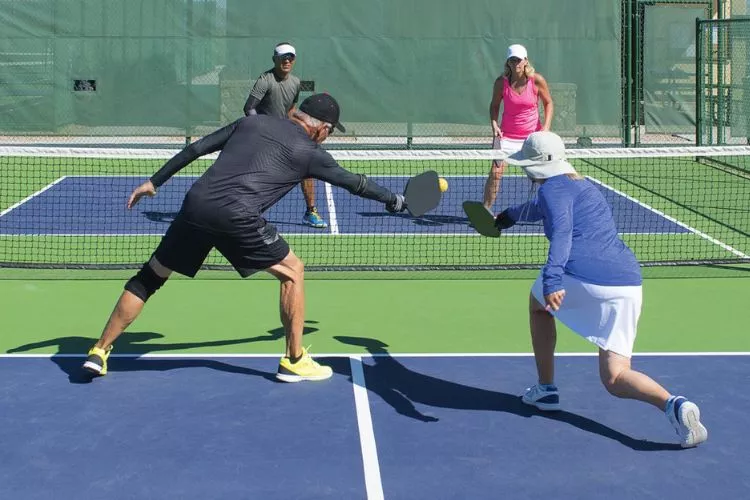Helping you understand the complexities of pickleball, this article delves into an imperative aspect of the game – faults.
Often leaving players bewildered, a fault in pickleball, poses an intriguing question, “What is it?”
Understanding the concept of a fault and the various conditions that may cause it can significantly improve your gameplay and strategy.

So, get ready to thoroughly comprehend the nuances, rules, and penalties associated with “Faults in Pickball”.
Let’s delve into the fascinating world of pickleball and unravel this crucial yet mystifying game rule.
What is a fault in pickleball?
A fault in pickleball is a violation of the game’s rules that results in the interruption of play and the team committing the fault losing their turn to serve or rally.
When a fault occurs, play stops, and the opponent scores a point or gets the serve. There are several scenarios that constitute a fault in pickleball, including:
- Serving faults: Hitting the ball out of bounds, not clearing the net, or the server stepping on the baseline or into the court during serve.
- Double-bounce rule: Hitting the ball before it bounces once on each team’s side during a rally or violating the two-shot rule where both the serve and return must bounce in the proper court (delineated by the non-volley zone line) before being volleyed (hit in the air without letting it bounce).
- Non-volley zone faults: Hitting a volley (an airborne shot) while standing inside the non-volley zone (also known as the kitchen) or when any part of the player’s body or clothing touches the non-volley zone line during a volley.
- Hitting the ball out: When the ball lands outside the court’s boundary lines or does not clear the net.
- Player contact: If a player makes contact with the ball before it crosses the net into their court.
By understanding and avoiding faults in pickleball, players can enhance their gameplay and achieve better results during matches.
Dive into Serving Faults in Pickleball
In pickleball, the server’s primary objective is to initiate play by putting the ball into action.
Serving faults can occur in several ways, disrupting the flow of the game and resulting in a loss of serve or point for the offending player.

Here are the main types of serving faults and how to avoid them:
Incorrect starting position: The server must be positioned behind the baseline and within the correct serving area, ensuring they do not step on or cross the baseline nor step into the court during the serve. To avoid this fault, make sure to maintain a steady and balanced stance with both feet positioned behind the service line.
Incorrect service motion: Pickleball serves must be underhand, meaning the paddle contacts the ball below the server’s waist level. Moreover, the server’s arm must be moving in an upward arc at the point of contact. To avoid service faults due to improper mechanics, practice a smooth and consistent underhand serving motion.
Improper service court: The served ball must cross over the net and land inside the opponent’s diagonal service court. It cannot touch the boundary lines or the non-volley zone line (also termed the kitchen) on the opponent’s side. To minimize the risk of serving to an improper court, practice aiming for the center of the diagonal service court during your warm-up sessions.
Hitting a “fault” serve: The serve can also be deemed faulty if it does not clear the net or lands outside of the opponent’s service court. Keep your serving motion consistent and relaxed, ensuring that your aim and elevation are controlled to successfully send the ball over the net and into the correct service court.
In pickleball, mastering an accurate and effective serve is essential to setting the stage for a winning rally.
By understanding and avoiding serving faults, you will significantly improve your overall performance and increase your chances of success in matches.
How Many Faults are Allowed in Pickleball?
In pickleball, there are no allowances for a specific number of faults as per the official rules. Essentially, each fault leads to an immediate consequence.
For instance, during the serve, if a fault occurs, the server loses their serve immediately and it passes onto the next player in line (either their teammate in doubles or the opponent in singles).
In doubles, each team gets two opportunities to serve (one for each team member) before the serve switches over to the other side.
Therefore, if both team members commit a serving fault, the serve goes to the other team. On the other hand, during a rally, if a team commits a fault, the opposing team is awarded a point.
So, essentially, every fault in pickleball leads to an interruption in the flow of the game – either causing a loss of serve or awarding a point to the other team.
What is a Foot Fault in Pickleball?
A foot fault is a type of violation in pickleball that revolves around the player’s foot positionHow to Master Footwork Techniques in Pickleball? during a serve or a volley. There are two primary scenarios where a foot fault may occur:

During a Serve
For a serve to be legal, the server must have both feet behind the baseline during the service action.
If any part of the foot is touching or over the baseline at the time the ball is struck, a foot fault is called, resulting in a loss of serve.
To avoid this, servers should ensure they maintain a steady position behind the baseline during the serve.
In the Non-Volley Zone (kitchen)
Another type of foot fault happens when a player volleys the ball – meaning to hit the ball before it bounces – while standing in the non-volley zone, or if any part of their body is touching the zone or its lines.
This rule is also applied if a player’s momentum carries them into the non-volley zone after hitting a volley shot.
To avoid this fault, players should work on their positioning and footwork around the non-volley zone, ensuring they do not touch or cross into it when they are volleying a shot.
Conclusion:
In summary, understanding and avoiding faults is an essential part of mastering pickleball. Enhancing your gameplay and adapting to the rules will significantly improve your overall performance and enjoyment of the game.
By recognizing various serving faults, double-bounce rules, non-volley zone faults, and foot faults, you can effectively strategize and minimize the risk of committing these game-interrupting violations.
Keep practicing, stay vigilant of the rules, and soon you’ll see yourself progress and excel in the exciting, fast-paced world of pickleball.

Pickleball’s more than a game to me—it’s a passion. I write, sharing its highs and lows, the thrills and the lessons. Some tales might draw you to the court, while others give a hint of the game’s magic. So, curious about my journey? Ready to dive deep into the world of pickleball with me? Let’s go.
